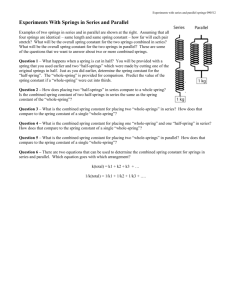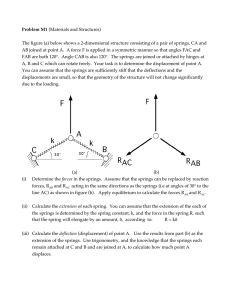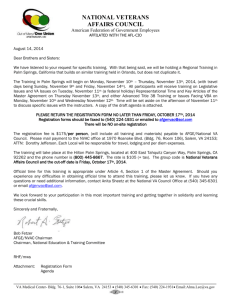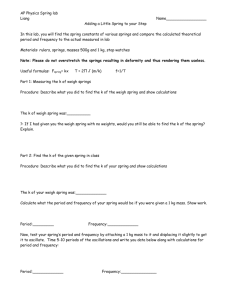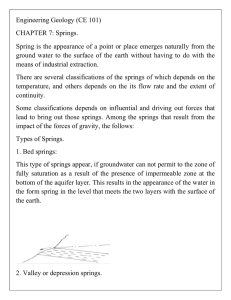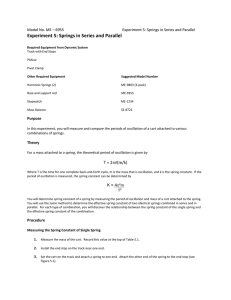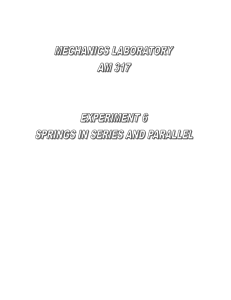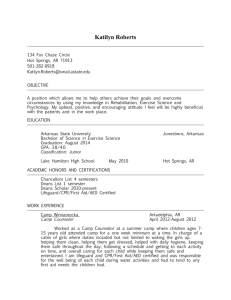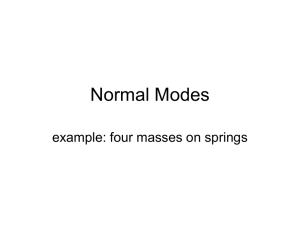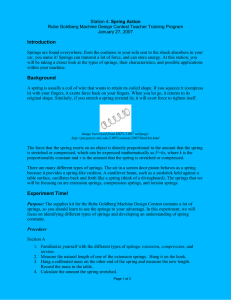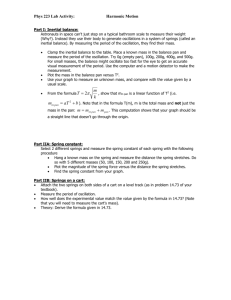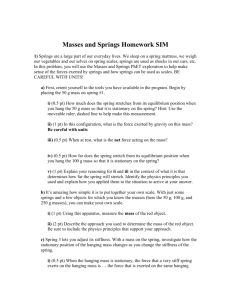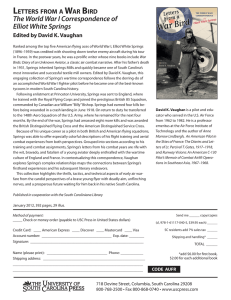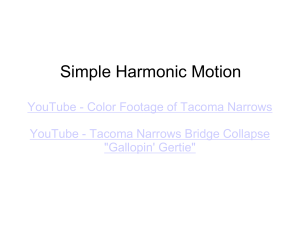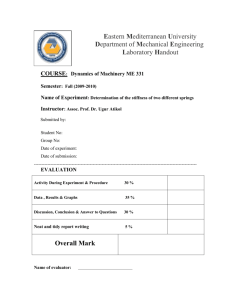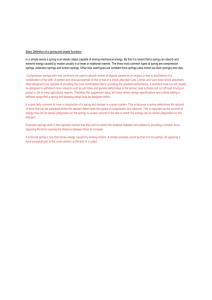TAP 227- 6: More than one spring
advertisement
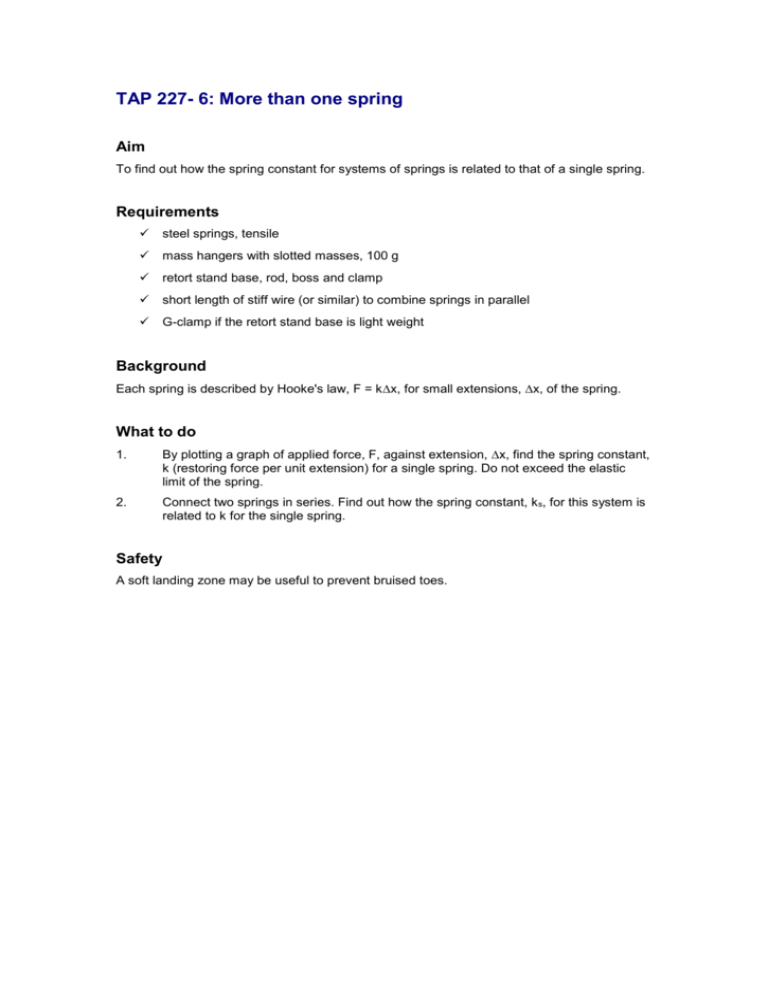
TAP 227- 6: More than one spring Aim To find out how the spring constant for systems of springs is related to that of a single spring. Requirements steel springs, tensile mass hangers with slotted masses, 100 g retort stand base, rod, boss and clamp short length of stiff wire (or similar) to combine springs in parallel G-clamp if the retort stand base is light weight Background Each spring is described by Hooke's law, F = kx, for small extensions, x, of the spring. What to do 1. By plotting a graph of applied force, F, against extension, x, find the spring constant, k (restoring force per unit extension) for a single spring. Do not exceed the elastic limit of the spring. 2. Connect two springs in series. Find out how the spring constant, k s, for this system is related to k for the single spring. Safety A soft landing zone may be useful to prevent bruised toes. springs in ‘series’ 3. Now connect two springs in parallel so they jointly support the masses. Find the spring constant for this parallel arrangement, k p, and find out how it is related to k for a single spring. springs in ‘parallel’ You can work out 1. A general rule relating the spring constant of a system of springs connected in series or parallel to the spring constant of a single spring. Practical advice This activity leads into a consideration of the relationship between the microscopic structure of a material and the Young modulus. With weaker students it will be necessary to carry out the experiment for them to 'see' how spring systems combine k. More able students may not need this concrete stage. Alternative approaches You may not think you have time to do the whole of this. At the least it will be worth showing the class the spring model of a crystal and discussing how forces at the atomic level can be estimated by this kind of analysis. Social and human context Thomas Young's interest in elasticity and the strength of materials arose from contemporary concerns about the design of two particular types of structure – bridges and warships. His lifetime (1773–1829) saw both the Napoleonic wars, in which British sea-power was crucial, and the building of four new bridges in central London: Waterloo, London, Southwark and Vauxhall, the first iron bridge to be built across the Thames. External References This activity is taken from Advancing Physics Chapter 5, 140E


